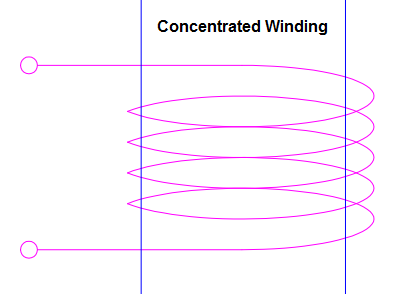

Because of this, high pole motors are sometimes referred to as torque motors and can be used to replace a motor using a gearbox. A motor with a higher number of poles will have a slower rated speed but a higher rated torque. The number of poles in the windings defines the motor’s ideal speed. Three phase motors are available in configurations of 2, 4, 6, 8, and up poles. The difference in speed ranges from 0.5-5% depending on the motor winding.

The rotor will turn slower than the stator field, and this is referred to as ‘slip.’ If the rotor were to turn at the same speed as the stator, no current would be induced, thus no torque. Because of this induced current, the rotor also creates a magnetic field and starts to follow the stator due to magnetic attraction. This creates a rotating magnetic field which in turn induces a current in the rotor. To actually achieve torque at the motor shaft, a current is applied across the stator. This makes for a more efficient and economical power supply. This is because it can transmit three times as much power while only using 1.5 times as much wire. Single phase power is fine for residential or other low power applications, but three phase power is typically required for industrial or higher power applications. At any point in time if you were to add up the voltage of each phase, the sum would be constant. In a three phase system, three wires are used to provide the same sinusoidal voltage, but each phase is shifted by 120°.

A single phase power supply uses two wires to provide a sinusoidal voltage.

The first concept we need to understand about a 3 phase induction motor is the first part of its name – 3 phase power. You can also watch the video below for an overview of 3 phase AC induction motors. This overview will explain what 3 phase power is, how Faraday’s law works, understanding the main components of an induction motor, and the effect of the number of stator poles on the rated speed and torque of a motor. This article and video will focus on the basics of a 3 phase AC induction motor, one of today’s most common types of industrial electric motors.


 0 kommentar(er)
0 kommentar(er)
